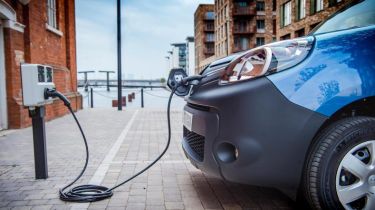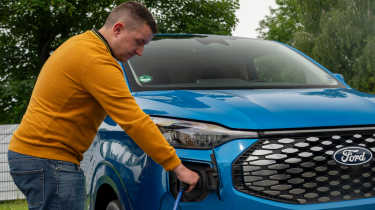Plug-in van grant extended to 2026: what is it and how does it work?
Could you or your business save up to £5,000 on a new electric van, and which vehicles are eligible for the scheme? Here's everything you need to know...

The Government has responded to calls to back incentives for electric van sales, by extending the plug-in van grant for another year until 2026.
According to the Department for Transport, the plug-in van grant has helped to sell over 80,000 electric and zero-emission vans since its launch, and £120 million has been allocated to extend the scheme.
We are still waiting for the Government’s response to its consultation over proposed changes to the ZEV mandate, at which point we’ll know whether it’s listened to pleas from industry and calls from the Climate Change Committee to boost incentives for electric cars as well. The plug-in car grant, which offered taxpayer-funded cash to EV buyers, was ended by the previous Government in 2022, while the plug-in van grant for business users was due to end this year.
Industry and climate campaigners will be hoping the stay of execution indicates a change of mindset at the DfT and the Treasury over the controversial question of whether taxpayer cash should be handed to buyers who can afford expensive new EVs.
Either way, van buyers – along with cab drivers and wheelchair accessible vehicle users – stand to benefit from the extended plug-in van scheme, designed to help them transition to zero-emission vehicles.
Plug-in grants were launched as a key part of the country’s goal for every new van on British roads to be electric by 2050, in turn enabling the target of net zero carbon by 2050 for the country as a whole.
Following the axing of the plug-in car grant in June 2022, the Government had previously announced that £300million of investment would be refocused towards the plug-in van grant, along with support for zero-emission motorcycles, trucks and wheelchair-accessible vehicles.
Here’s everything you need to know about the plug-in van grant…

Which vans are eligible for the grant?
Contrary to what the name suggests, the plug-in van grant doesn’t apply to all vans with a plug. In order to qualify for the subsidy, a van must be capable of covering at least 60 miles in zero-emission mode and must emit less than 50g/km of CO2 according to manufacturer-stated figures based on the official tests.
Technically, a plug-in hybrid van meeting these criteria would be eligible for the grant, but as no such vehicle is currently available on the market, the grant is effectively limited to fully electric vans.
How much is the plug-in van grant?
The value of the plug-in van grant varies according to the size of the van it’s being applied to. Eligible vans with a gross vehicle weight (GVW) of less than 2.5 tonnes can receive as much as 35 per cent of the purchase price, up to a maximum sum of £2,500.
Buyers of eligible vans with GVWs of between 2.5 and 3.5 tonnes can still only receive up to 35 per cent of the vehicle’s purchase price, but the cap is set higher at £5,000. Eligible vans with GVWs of 3.5 tonnes or more are catered for by a grant for small trucks – this is worth up to 20 per cent of the vehicle’s value, with a cap of £16,000.
Small vans eligible for the plug-in van grant
The Government’s list of electric vans weighing less than 2.5 tonnes that are eligible for the plug-in van grant is as follows:
|
|
Buyers can claim a grant worth 35 per cent of the purchase price of these vans, up to a maximum sum of £2,500.
Large vans eligible for the plug-in van grant
The Government’s list of electric vans with gross vehicle weights between 2.5 and 3.5 tonnes that are eligible for the plug-in van grant is as follows:
Buyers can claim a grant worth 35 per cent of the purchase price of these vans, up to a maximum sum of £5,000.
How do I apply for the grant?
The good news is that buyers don’t have to make any applications in order to benefit from the plug-in van grant. If you purchase an eligible van from a dealer, the appropriate discount will be automatically applied.
This sum is deducted from the van’s list price – it’s worth noting that any optional equipment selected by the customer is not included in the calculated list price and therefore does not affect the discount you receive.
Looking to switch to all-electric power? These are the best electric vans you can buy...
Find a car with the experts



